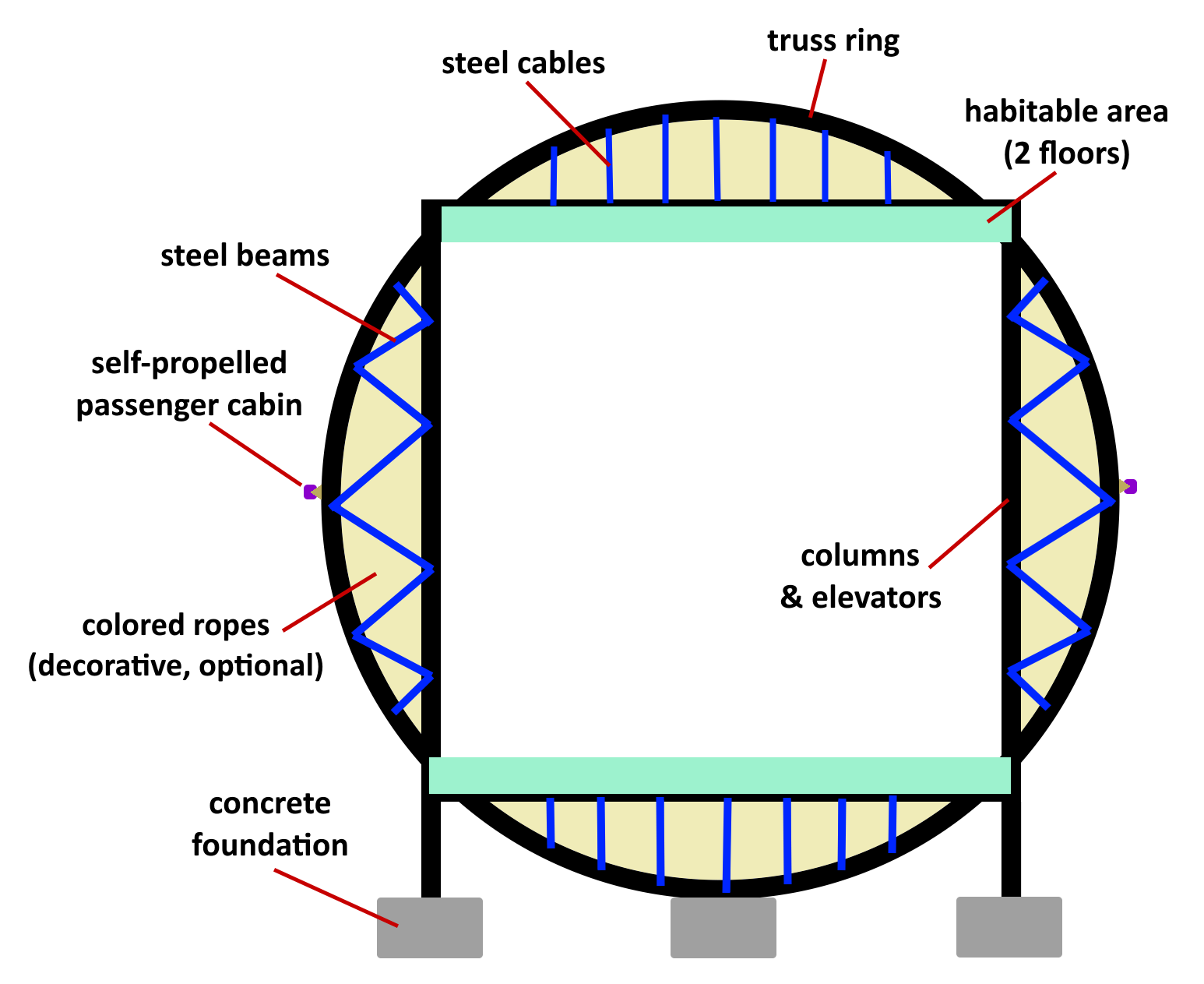=mining =heavy equipment
The government of Seoul is planning to build a 180m diameter "spokeless Ferris wheel" often called the "Seoul Ring". Here's a video on the project.
I'm not sure that the proposed design is practical. A large ring can be squeezed easily. Force on opposite sides is effectively cantilevered across its entire circumference. Thus, a spokeless ring requires a thick truss, with thickness being a significant fraction of the wheel diameter. The Bailang River Bridge Ferris Wheel in China is the current largest spokeless Ferris Wheel. The designers made the truss as thick as they felt was possible without compromising the aesthetics too much, and the result is still structurally inefficient and doesn't allow for an observation deck.
It occurred to me that the structural issues of a spokeless Ferris wheel could be solved by inscribing a square in the circle. Here's a diagram of that, with proportions based on a 200m diameter:

This has multiple advantages over a ring without a square:
- It's much
more structurally efficient.
- The construction process is much easier.
- It provides a large flat area near the top for observation decks and
restaurants.
- The top area can be accessed by vertical elevators.
The upper structure is similar to a tied-arch bridge, and the side structures are similar to a lenticular truss.
This would obviously be more expensive per floor area than a conventional building, but the construction cost per floor area should only be perhaps twice as much. It would also obviously use land and elevators less efficiently than conventional buildings, and have some extra cost for the cabins and their tracks.
Ferris wheels typically have a rotating main structure. Spokeless Ferris wheels typically have a chain connecting the cabins. However, for a 200+ meter diameter wheel, I think self-propelled cabins are a better approach. They could use either sliding electrical contacts or Li-ion batteries. While rack railways do exist, lubrication of an exposed rack-and-pinion drive is an issue. Polymer gears can operate without lubrication, but then UV exposure is a problem. The best option for a drive system might be a roller-pinion drive. (Industrial ones are somewhat expensive, but that's mostly because they're small and designed for very high precision.)
In addition to simplifying the ring structure, self-propelled cabins also provide more flexibility. For example, they could fully stop when loading and unloading. One possibility is alternating between a "Ferris wheel mode" and a "roller coaster mode" where cabins fall from near the top, reaching perhaps 110 mph. It would also be possible to operate the upper section at low speed, and the lower section at high speed, with passengers loading and unloading at the observation deck level and walking across it.
Because this design is structurally sound with support at 2 points, an interesting possibility is building it over a small river. The aesthetics of a large hollow ring over a river would be unique.